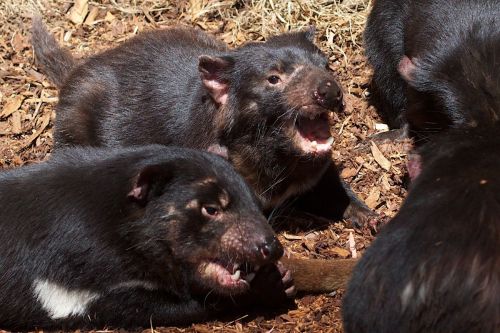Snails are mollusks and are one of the most numerous animal species in the world. In terms of species diversity, they are second only to insects. Even though they come from an aquatic environment, they also managed to colonize land. When we hear the word snail, we most often think of a shell, which is considered to be their inherent feature. Nothing could be further from the truth, there are plenty of snails that have no shells at all. Most of them inhabit the oceans, but they can also be easily found on land. The largest land snail is the great grey slug.
These organisms had rudimentary and primitive shells. Over the next 80 million years, they slowly evolved to flourish and develop many different forms in the Ordovician. The first snails inhabited the seas and oceans. Individuals anatomically similar to those currently living arose in the Triassic, and it was only in the Cretaceous, 150 million years ago, that they began to colonize land.
According to estimates, there are about 85.000 of them, but the actual number is between 50.000 and 120.000 species. So far, at least 15.000 extinct species have been identified in the fossil record.
About 24.000 live on land and about 5000 in freshwater.
It is an armor that protects the snail's soft body against external threats, protects it against excessive water loss, provides an attachment for muscles, and accounts for calcium storage.
90% of snails have a dextral shell, the rest develop left-handed shells or both right-handed and left-handed shells within the same species. There are also snails with shells in the shape of a plate or a small cone, as well as with two-part shells.
Terrestrial animals feed mainly on plants, although there are predators among them. Predatory land snails hunt other slowly moving organisms, so they prey on other snails or earthworms.
It is a cartilaginous structure covered with a large number of tiny chitin teeth. It is set in motion by muscles. It occurs in both herbivorous and carnivorous snails. The structure of the radula does not necessarily have to be related to the snail species and is often determined by diet. The cloves may take on a pointed shape when the snail feeds on algal tissue, and when it feeds on epiphytes (plants growing on other plants), the cloves are usually blunt-ended.
The only such representative of land snails is Careoradula perelegans (careo in Latin means missing). There are more species of marine snails that do not have this organ, including all representatives of the Tethydidae family and all representatives of the Clathromangelia genus.
They hunt for snails and other snails. Scavengers feed on dead crustaceans, mollusks, or fish.
Some of them feed on cnidarians, whose toxins do not harm the snail. Instead, the eaten cnidarians are transported through the snail's digestive system and placed at the back of its back, where they play a protective role. These snails can also camouflage themselves to avoid being eaten or produce special mucus that is released when the snail is touched. Some nudibranchs can produce sounds audible to the human ear. All representatives of nudibranchs are hermaphrodites, but they are unable to fertilize themselves.
The vast majority of sea snails are equipped with gills, some freshwater snails also breathe with them. Other freshwater species and most terrestrial species use a primitive lung for breathing, composed of a mantle cavity with a strong blood supply.
The oxygen carrier is hemocyanin and the copper it contains. Hemocyanin is blue.
Most sea snails have two sexes and land snails are hermaphroditic. Marine species lay externally fertilized eggs, which develop into larvae: these are either trochophores or veligers. In land snails, simple development takes place and internally fertilized eggs develop into adults.
The olfactory organs are located at the tips of the snail's antennae. Marine species, on the other hand, use chemoreceptors more frequently.
However, their location varies between species, some have them on the tips and others at the base of the antennae. This is not the most important sense of land snails because they are mostly active at night. The complexity of the eye can vary greatly between species, some have simple eyes that cannot show an image but only the intensity of light, and others have compound eyes equipped with a lens.
These include freshwater ones from the Ampullariidae family and marine ones from the Strombus genus.
It occurs throughout Europe, where it was introduced in the 16th century. This snail can reach 20 cm in length.
It is a shell snail that can grow up to 91 cm in length and weigh 18 kg. It inhabits the waters around Australia, where it hunts polychaetes.












